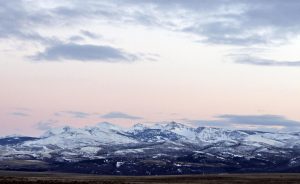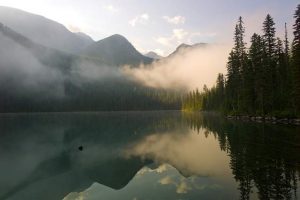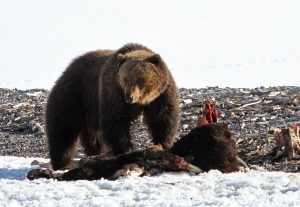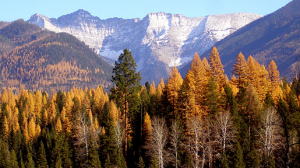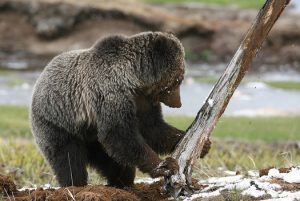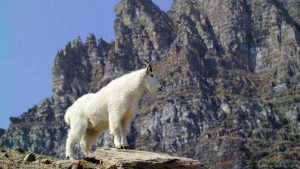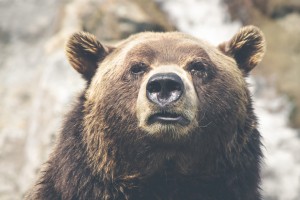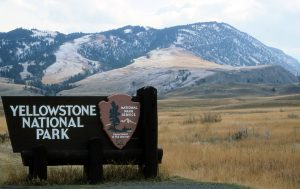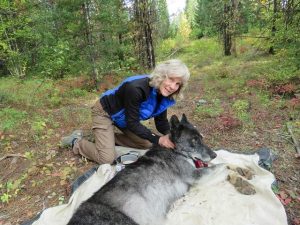
Tim Manley shared this very important and significant op-ed from the Missoulian on Facebook this morning . . .
“Sharing an Op-Ed from the Missoulian. I have copied and pasted it to make it easier to read.”
“I know and have worked with many of these biologists that signed the letter. They have many years of experience and I have a lot of respect for them.”
Opinion: Montana’s natural resources are under attack
We are long-time Montana residents and professional wildlife biologists and managers with a total of 1,493 years of experience in wildlife management and wildlife habitat management with Montana Fish, Wildlife and Parks (FWP), federal agencies, and Tribes. Among us are 13 retired biologists with more than 370 years with FWP, and three former commissioners from the Montana Fish and Wildlife Commission.
Montana’s natural resources are under attack by extremists and special interests in the legislature and the governor’s office. These extreme views are reflected in the anti-predator, anti-hunter access, and anti-habitat preservation legislation introduced and, in most cases, passed in the 2021 legislature. The governor’s appointments to the Montana Wildlife Commission as well as the appointed leadership of Montana Fish, Wildlife and Parks (FWP) now represent the interests of a minority instead of the majority of the hunters, anglers, and citizens of Montana who value Montana’s wildlife whether they hunt and fish or not. We believe these changes have resulted in a steep decline in the morale of career FWP staff across the agency, especially biologists. The focus of the current Wildlife Commission and FWP leadership are the interests of these special interest groups:
- Large, politically connected landowners who want to privatize and commercialize elk hunting for a privileged few on private lands by selling access or outfitted elk hunts, particularly hunts for trophy bulls. They also want to reduce cow elk numbers by aggressive shoulder seasons into mid-February on public lands adjacent to private lands rather than hunting on private lands.
- Commercial outfitters who want to expand outfitter financial opportunities and reduce regulation and regulation enforcement.
- Trappers, hound hunters, crossbow hunters, and muzzle loaders who want to legislate their special interest desires such as reducing trap setbacks near roads and trails; use of hounds to hunt black bears in grizzly range; extending the big game hunting season just for muzzleloaders; and allowing use of high technology crossbows during the traditional bow hunting season.
- • Wolf haters in the legislature who made up fact-free stories about the impacts of wolves on elk populations in order to destroy Montana’s recovered wolf population by legislating use of baited leg-hold traps and neck snares for wolves on public lands, unethical night hunting over bait with night vision scopes and spotlights, extending the wolf trapping season, increased bag limits per hunter, paying bounties to kill wolves, and allowing baited neck snares and leg-hold traps on public land in grizzly and black bear habitat during the time bears are out of the den. These wolf persecution methods are completely contrary to the accepted principles of fair chase hunting and hunter ethics.
The Montana Wildlife Commission now represents special interests and not the average sports men and women and all citizens of Montana. Recent Commission appointees are or were leaders of:
- The Safari Club (wealthy trophy hunters).
- Montana Outfitters and Guides Association (commercialization of public wildlife hunting for the profit of a few).
- Montana Stockgrowers Association (livestock interests/large landowners and commercialization of private land elk hunting).
- PERC, the Property and Environment Research Center, an organization that promotes privatizing wildlife and giving big landowners special elk permits that they can sell in exchange for some limited public hunting access.
The governor’s appointed leadership of FWP and the Wildlife Commission have demonstrated that they will represent minority special interests instead of the majority of hunters, anglers, and citizens of Montana who value Montana wildlife and fish. For example, the Commission, in a hastily organized and minimally advertised Zoom meeting on Sept. 24, awarded the Wilks brothers eight trophy bull permits for their ranch in the Snowy Mountains. They get to award these eight permits to those “…who contribute to the success of the ranch.” This is privatization and commercialization of Montana wildlife for wealthy landowners, which is fully supported by the 2021 legislature and the governor. These eight bull permits are above and beyond what FWP biologists recommended for harvest in the area and the Commission awarded them anyway.
Wildlife management in Montana has become politicized. Politicians are now setting science-free wildlife policy based on their personal, partisan agendas. The careful management of Montana’s treasured wildlife and fish used to be a bi-partisan issue, but not anymore. The Republicans in the legislature, appointed FWP leadership, and the appointed Wildlife Commission have ignored facts and science to implement regressive wildlife policy. They also have ignored the concerns of the public even when the public is overwhelmingly opposed to what they are doing.
As wildlife professionals we oppose the current politicization of wildlife management and wildlife policy in Montana. We believe that wildlife management should be based on science and facts in order to assure the careful management of all of Montana’s fish and wildlife. Such decisions should be made in accordance with the interests of the majority of Montana residents who desire healthy fish and wildlife and a healthy environment. The future of Montana’s fish and wildlife should not be sacrificed to partisan political agendas that cater to special interests, favor the wealthy few, and are based on irrational hatred of predators.
Sincerely,
Chris Servheen, Ph.D.
35 years US Fish and Wildlife Service as Grizzly Bear Recovery Coordinator (retired). Missoula, MT.
Richard Mace, Ph.D.
31 years Montana Fish, Wildlife and Parks as Research Biologist (grizzly and black bears) (retired). Primarily responsible for grizzly bear population ecology research in the Northern Continental Divide Ecosystem. Kalispell, MT.
Harvey Nyberg, M.S.
26 years Montana Fish, Wildlife and Parks, last job as Regional Supervisor (retired). Lewistown, MT.
Gayle Joslin, M.S.
32 years Montana Fish, Wildlife, and Parks as Wildlife Management Biologist and Research Biologist (retired). Helena, MT.
Keith Aune, M.S.
41 years: 31 years Montana Fish, Wildlife, and Parks as Wildlife Research Biologist, Laboratory Supervisor, Chief of Wildlife Research (retired); and 10 years as a wildlife biologist at the Wildlife Conservation Society (retired). Bozeman, MT.
Bruce Sterling, M.S.
38 years Montana Fish, Wildlife, and Parks as Management Biologist (retired). Thompson Falls, MT.
Jim Vashro, M.S.
39 years Montana Fish, Wildlife and Parks as fishery biologist and regional fisheries manager (retired). Kalispell, MT.
Mike Madel, B.S,
40 years: 34 years Montana Fish Wildlife and Parks as Grizzly Bear Management Biologist and Project Leader of Rocky Mountain Front Grizzly Bear Management Program (retired); 6 years UM Border Grizzly Project, US Forest Service, and Fish Wildlife, and Parks as bear habitat and Research Biologist in the Missions and the Cabinet Mountains (retired). Choteau MT.
Diane Boyd, Ph.D.
23 years: 8 years Montana Fish, Wildlife and Parks as wolf upland bird biologist (retired), 15 years University of Montana as large carnivore researcher (retired). Kalispell, MT.
Ron Marcoux, M.S.
40 years: 22 years Montana Fish, Wildlife, and Parks as Biologist and Deputy Director (retired); 18 years with Rocky Mountain Elk Foundation in land conservation and administration (retired). Helena, MT.
Kristi DuBois, M.S.
34 years: 28 years Montana Fish, Wildlife and Parks as a wildlife biologist (both game and nongame) (retired); and 6 years US Fish and Wildlife Service as a wildlife biologist (retired). Missoula, MT.
Tim Thier, M.S.
32 years: 27 years Montana Fish, Wildlife and Parks as Wildlife Biologist (retired); 5 years US Fish and Wildlife Service as Wildlife Biologist (retired). Trego, MT.
Heidi B. Youmans, M.S.
27 years Montana Fish, Wildlife, and Parks as Area Management Biologist, Upland Game Bureau Chief, Non-Game Bureau Chief (retired). Helena, MT.
Graham Taylor, M.S.
42 years Montana Fish, Wildlife, and Parks as Area Wildlife Biologist and Regional Wildlife Manager (retired). Great Falls, MT.
Gary Olsen, M.S.
34 years Montana Fish, Wildlife and Parks as Area Biologist (retired), Conrad, MT.
Gary Wolfe, Ph.D.
42 years: 4 years as a Commissioner on the Montana Fish and Wildlife Commission, 12 years Vermejo Park Ranch Wildlife Biologist/Manager and big game Hunting Outfitter and Guide; 15 years Rocky Mountain Elk Foundation, Wildlife Biologist/Field Director, Director of Field Operations, Chief Operating Officer, President & CEO (retired); 11 years Vital Ground Foundation, Wildlife Biologist/Executive Director (retired); 60 years a deer and elk hunter. Missoula, MT.
Dan Vermillion, J.D.
13 years as a Commissioner on the Montana Fish and Wildlife Commission. Livingston, MT.
Tim Aldrich, B.S.
4 years as a Commissioner on the Montana Fish and Wildlife Commission. Missoula, MT.
Greg Munther, M.S.
32 years US Forest Service as Biologist and District Ranger (retired). Missoula, MT.
Chuck Schwartz, Ph.D.
36 years: 20 years, Alaska Fish and Game as Research Biologist (retired); and 16 years USGS as Leader, Interagency Grizzly Bear Study Team (retired). Bozeman, MT.
Sterling Miller, Ph.D.
21 years Alaska Fish and Game as Wildlife Management Biologist (retired). Affiliate Professor, University of Montana. Lolo, MT.
Dan Carney, M.S.
31 years Blackfeet Tribe as Senior Wildlife Biologist (retired). East Glacier, MT.
William H. Geer, M.S.
40 years: 16 years as a fisheries research biologist, chief of fisheries and director of Utah Division of Wildlife Resources (retired); 24 years as a biologist with the National Fish & Wildlife Foundation, Rocky Mountain Elk Foundation and Theodore Roosevelt Conservation Partnership (retired). Lolo, MT.
Douglas H. Chadwick, M.S.
43 years: 3 years wildlife technician with NPS, 40 years independent wildlife biologist collaborating with various university and agency researchers. Whitefish, MT.
Tom Puchlerz, M.S.
38 years US Forest Service as Wildlife Biologist, District Ranger, and Forest Supervisor (retired). Stevensville, MT.
Kate Kendall, M.S.
36 years National Park Service and US Geological Survey as research ecologist (retired). Columbia Falls, MT.
Gary Moses B.S.
35 years; 28 years National Park Service in Glacier and Yellowstone National Parks as Supervisory Ranger (retired); Glacier Bear Management Committee Chair; 7 years as Counter Assault Bear Spray Ambassador (retired). Kalispell, MT.
Glenn Elison, M.S.
25 years US Fish and Wildlife Service as Assistant Regional Director for Refuges and Wildlife (retired). Lewistown, MT.
Joe Fontaine B.S.
28 years: 6 years U.S. Bureau of Reclamation Wildlife Biologist,18 years U.S. Fish and Wildlife Service as Deputy Wolf Recovery Coordinator (retired), 4 years as Deputy Project Leader National Wildlife Refuge Complex (retired). Helena, MT.
Dave Wesley, Ph.D.
25 years: 20 years Ducks Unlimited as Director of Field Operations (retired); 5 years Mississippi State University as Associate Professor (retired). Missoula, MT.
Mike Getman, M.S.
35 years US Fish and Wildlife Service as Wildlife Biologist (retired). Lewistown, MT.
Glenn Plum, Ph.D.
25 years National Park Service as Wildlife Biologist (retired). Livingston, MT.
Mary Maj, M.S.
32 years US Forest Service as District and Regional Wildlife Biologist, Resource Staff Officer, and District Ranger (retired). Bozeman, MT.
Dale Becker, M.S.
39 years: 7 years as a private wildlife consultant; 32 years Confederated Salish and Kootenai Tribes as Tribal Wildlife Program Manager. Polson, MT.
Edward Bangs, MS.
36 years US Fish and Wildlife Service as Wildlife Biologist on Kenai NWR and Northern Rocky Mountain Wolf Recovery Coordinator (retired). Helena, MT.
Jim Claar, M.S.
32 years: 21 years US Forest Service as Wildlife Biologist (retired), and 11 years Bureau of Indian Affairs as Wildlife Program Manager (retired). Missoula, MT.
Jack Stanford, Ph.D.
36 years Flathead Bay Biological Station as Director (retired). Bigfork, MT.
Kerry R. Forsman, Ph.D.
37 years University of Montana as Professor of Biology and Wildlife Biology (retired). Missoula MT.
Dan Pletscher, Ph.D.
29 years University of Montana as Professor and Director of the Wildlife Biology Program (retired). Missoula, MT.
Jay Gore, M.S.
30 years: 10 years US Forest Service as Wildlife Biologist (retired); 13 years US Fish and Wildlife Service as Wildlife Biologist (retired); 7 years Corps of Engineers as Wildlife Biologist (retired). Missoula MT.
Shannon Clairmont, B.S.
18 years Confederated Salish and Kootenai Tribes as Wildlife Biologist. Ronan, MT.
Mike Phillips, M.S.
35 years: US Fish and Wildlife Service Red Wolf Restoration Leader (retired); National Park Service Grey Wolf Restoration Leader (retired); Turner Endangered Species Fund Executive Director; Montana State Legislator 2006-2020. Bozeman, MT.
Lewis Young, M.S.
48 years: 31 years US Forest Service as Wildlife Biologist and Wildlife Program Manager (retired); 17 years as consultant with National Park Service, Bureau of Land management, and Montana Fish, Wildlife and Parks (retired). Eureka, MT.
Art Soukkala, M.S.
30 years Confederated Salish and Kootenai Tribes as a Wildlife Biologist working on Wildlife Conflicts and Restoring Wildlife Populations and Habitat. Charlo, MT.
Marion Cherry, M.S.
30 years: 8 years US Forest Service as wildlife biologist; 22 years Gallatin National Forest as Wildlife Biologist and Grizzly Bear Habitat Biologist (retired). Bozeman, MT.
